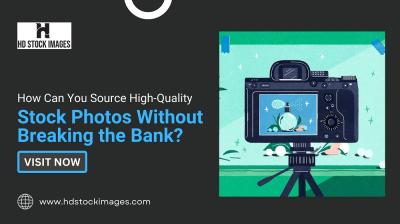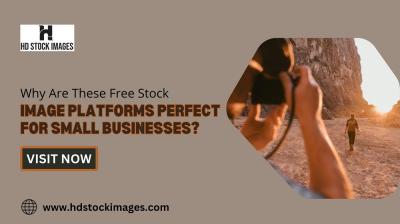If you've ever scrolled through a visually stunning website or flipped through a magazine filled with captivating photos, you've probably come across Getty Images. This renowned platform has become the go-to resource for high-quality stock images, video footage, and music. Founded in 1995, Getty Images aims to connect creative professionals with the visual content they need for their projects. Whether you're a graphic designer, a content marketer, or an aspiring photographer, understanding what
But with all this fantastic content comes a question that many creators have: How much does it actually cost to use Getty Images? The answer isn't straightforward, as it depends on various factors like the type of license you choose and the intended use of the images. Let’s take a closer look at what Getty Images is all about and how it can fit into your creative endeavors.
Types of Getty Images Licenses

When it comes to using images from Getty Images, understanding the types of licenses available is crucial for both compliance and budgeting. Getty offers different licenses tailored to various needs, each with its own set of rules and pricing. Let’s break it down:
- Royalty-Free (RF): This license allows you to pay a one-time fee to use an image across various platforms without any additional royalties. The flexibility it offers makes it a popular choice among many users.
- Rights-Managed (RM): Unlike RF, RM licenses are tailored for specific uses, which means you'll pay based on the intended application, duration, and geography. This type of license is ideal for high-profile projects where exclusivity is important.
- Editorial Use Only: Images labeled for “editorial use only” can’t be used for commercial purposes. They are perfect for news articles, blogs, and educational content but may limit exposure and marketing opportunities.
- Extended Licenses: If you need extra rights—for example, allowing print runs beyond certain limits or using images in merchandise—an extended license is necessary. This option tends to be pricier but can save you from potential legal issues down the line.
In summary, choosing the right type of license based on your project needs can save you both time and money, while ensuring you're compliant with Getty's terms. Understanding these licenses can empower you to make the best choices for your creative projects without breaking the bank.
Also Read This: How Much Does Foap Pay for Getty Sold Image Earnings for Foap Contributors through Getty Licensing
Pricing Models for Getty Images
When it comes to using Getty Images for your projects, it's essential to understand the various pricing models available. Knowing these can help you make the right choice that fits both your creative needs and budget. Let's break down the main pricing models:
- On-Demand Pricing: This is often the most straightforward approach. You can purchase licenses for individual images as you need them. Prices vary based on factors like image resolution and exclusivity. Typically, you'll find prices ranging from $50 to several hundred dollars per image.
- Subscription Plans: If you're planning to use images on a more regular basis, a subscription plan might be your best bet. These plans allow you to pay a monthly or annual fee for a set number of downloads per month. Subscriptions can cost anywhere from $200 to over $2000 annually, depending on the level of service.
- Enterprise Solutions: For larger organizations or businesses that have high-volume needs, Getty Images offers custom pricing tailored to specific needs. This model includes options for bulk downloads and multi-user access, making it ideal for teams or corporations.
- Editorial Use Pricing: If you're using images for news or editorial content, you'll need to look into pricing specifically for editorial use. These images often have different terms and are sometimes available in different pricing brackets, usually on the lower end but with restricted use cases.
Understanding these models is vital for budgeting your project adequately and ensuring you get the value you need from your investment.
Also Read This: How to Determine the Pixel Dimensions of an Image
Factors Influencing Costs
Getty Images offers a wide range of visual content, but did you know that several factors can influence the costs associated with acquiring those images? Let’s explore some of the key elements that can affect pricing:
- Image Type: The kind of image you’re after (stock photo, video, illustration, etc.) plays a significant role in pricing. Generally, unique or less common types may cost more due to their specialized nature.
- Usage Rights: Licensing is a biggie! The rights you need for an image—whether it's for commercial, editorial, or social media use—can affect the price. Some licenses are more restrictive, which can also drive costs up.
- Image Resolution: Higher resolution images are typically more expensive because they offer better quality and versatility for large prints or digital use. So, if you only need a low-res image, you might save some money!
- Exclusivity: If you're after an exclusive license—meaning no one else can use the image—expect to pay a premium. Non-exclusive licenses, by contrast, are usually more cost-effective as multiple parties can use the same image.
- Project Scale: The scope of your project matters too! Larger projects or those that require a significant number of images can often lead to bulk pricing options, potentially saving you money.
As you navigate your options with Getty Images, keeping these factors in mind will help you make informed decisions as to which images fit your project needs and budget.
Also Read This: Creating an Impressive 3D Graphic Portfolio on Behance
Comparing Getty Images with Other Stock Photo Providers
When diving into the world of stock photography, it becomes essential to weigh your options. Getty Images is a leader in the industry, but it’s not the only player in the game. So, how does it stack up against other stock photo providers like Shutterstock, Adobe Stock, or iStock?
Here’s a breakdown of key factors to consider:
| Criteria | Getty Images | Shutterstock | Adobe Stock | iStock |
|---|---|---|---|---|
| Image Quality | Premium | Varied | High | Good |
| Pricing | High | Affordable Options | Moderate to High | Competitive |
| Licensing Flexibility | Extensive | Varied | Creative Rights | Standard |
| Collection Size | Extensive | Large | Large | Substantial |
In summary, Getty Images excels in image quality and collection size, making it a top choice for professionals needing specific content. On the other hand, platforms like Shutterstock and iStock may appeal more to those with tighter budgets or those seeking a broader range of affordable options. Ultimately, the best choice hinges on your project requirements and budget.
Also Read This: Creating 3000×3000 Pixel Images Easily
Checklist for Budgeting Getty Images
When working on projects that involve Getty Images, it’s vital to have a clear financial plan. After all, you wouldn’t want to be caught off-guard by unexpected costs. Here’s a helpful checklist to ensure you budget effectively:
- Determine Your Needs: What type of images do you need? Are they for commercial use, editorial, or personal projects? Understanding this will help you choose the right type of license.
- Explore Pricing Plans: Familiarize yourself with Getty’s pricing structure. Do they offer subscriptions, bundles, or single image purchases that might save you money?
- Account for Licensing Fees: Consider the specifics of licensing fees. Rights-managed vs. royalty-free licenses can dramatically affect costs.
- Monitor Your Usage: Track how many images you plan to use. Doing so will help avoid any additional costs if you exceed your plan or license.
- Look for Discounts: Occasionally, Getty Images may offer promotions. Keep an eye out for these to potentially save a bit of cash.
- Consult with Your Team: Collaborate with your team members to assess what they might need. This can prevent overspending on multiple images that are similar.
By following this checklist, you can create a budget that accommodates your needs while ensuring you don’t break the bank. Planning ahead is the key to maintaining control over your project's finances!
Understanding the Costs of Using Getty Images for Your Projects
Getty Images is a renowned stock photography platform that offers a vast array of high-quality images, videos, and music for creatives, marketers, and corporate professionals. However, understanding the costs associated with using Getty Images is crucial for anyone looking to incorporate their media into projects.
The pricing structure of Getty Images can often be a bit complex, as it varies based on several factors, including:
- Type of License: Getty Images offers both royalty-free (RF) and rights-managed (RM) licenses. RF images typically allow for broader use without additional fees, while RM images are priced based on specific usage rights.
- Image Size: Larger images or those intended for print often come at a premium price in comparison to smaller digital-only images.
- Subscription vs. On-Demand Purchases: Getty offers subscription plans for regular users, which can reduce costs if you need multiple images over time. Alternatively, individual purchases can be made for occasional use.
| License Type | Price Range |
|---|---|
| Royalty-Free (RF) | $25 - $500 |
| Rights-Managed (RM) | $150 - $3,000+ |
Additional costs may arise from various factors, including usage duration, geographical restrictions, and the level of exclusivity you require.
In conclusion, understanding the costs of using Getty Images is essential for effective budgeting and maximizing the value of your visual content while ensuring compliance with licensing agreements.
 admin
admin








